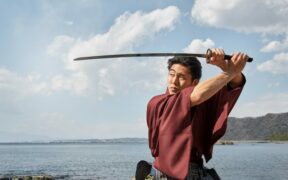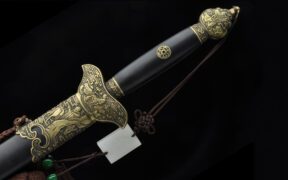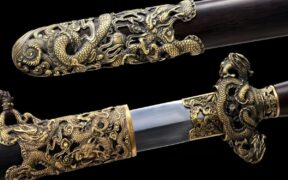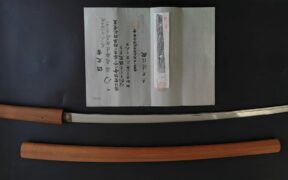Our content features commercial links to our products, committed to transparent, unbiased, and informed editorial recommendations. Learn More
Dragon Katana Sword Symbolism and Its Cultural Significance Explained
NO AI USED This Article has been written and edited by our team with no help of the AI
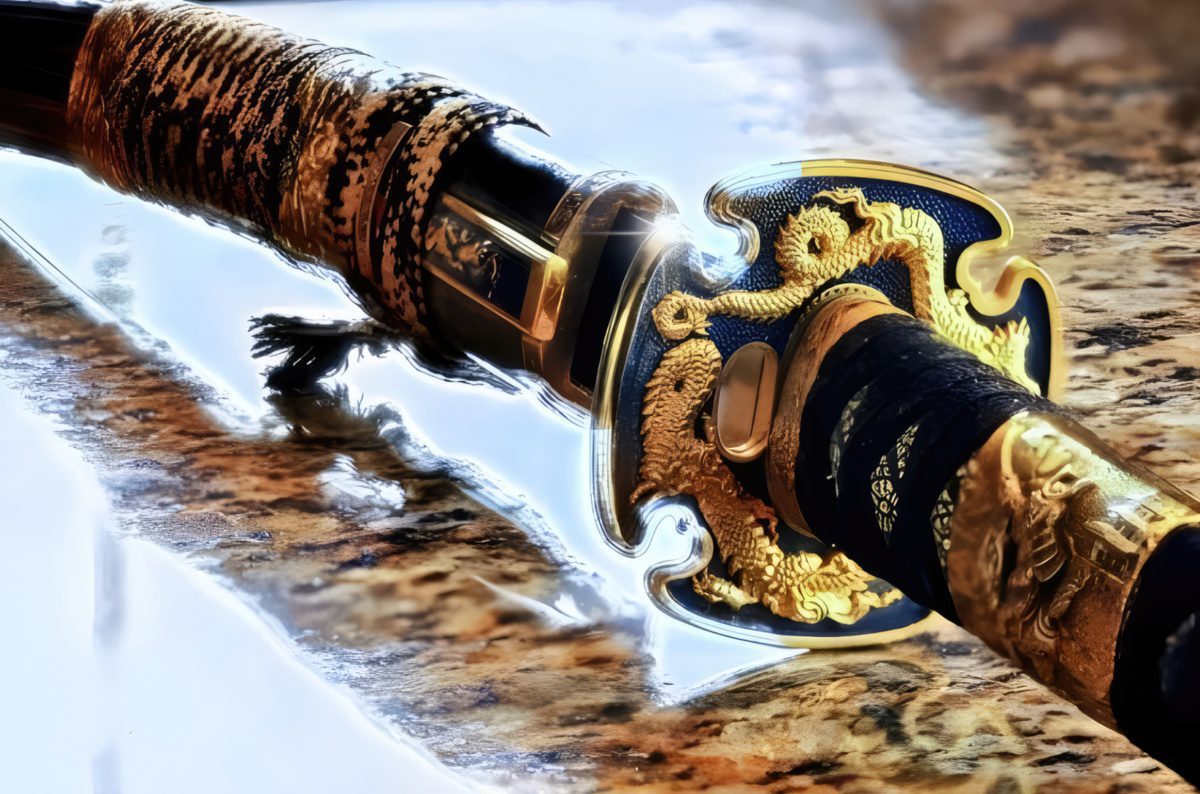
One of the most well-known swords, the Katana, originates from Japan. The Japanese people are masters at making superb-looking blades, and they pair those blades with handle components that are equally well-made and thoughtfully designed so the curved blade can be effectively used with great confidence.
Japanese swords can vary in size and shape, but they all share a common emblem and symbol that connects them to the country’s rich history and culture — the Japanese dragon.
This article will explain what this dragon represents and offer a few examples of Japanese Katanas enriched with it. We will conclude the article with the meaning of each part of the Katana in case you decide to make your own custom sword.
What Does the Japanese Dragon Represent?
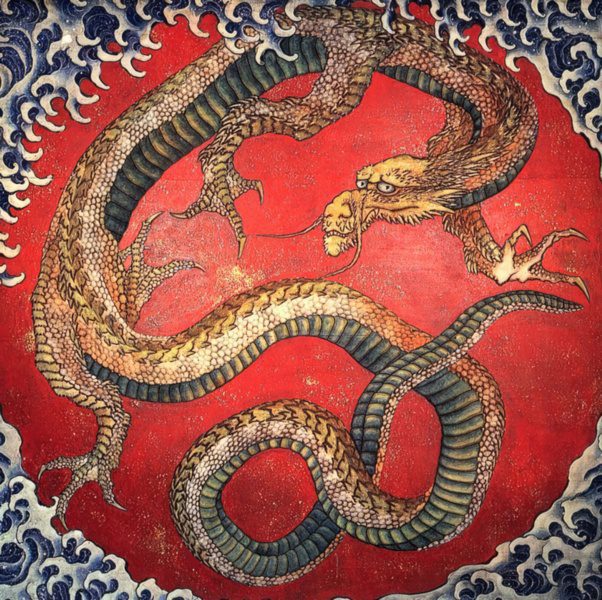
The dragon, called tatsu or ry, is a legendary creature in Japanese mythology and folklore. Most Japanese dragon myths can be traced back to Korea, India, and, most importantly, China. The Japanese dragon can take different forms and shapes, but generally, it stands for wisdom, strength, valor, protection, rebirth, good luck, and prosperity.
Modern Japanese and Chinese dragons differ in appearance due to the number of claws they sport and their elongated serpentine bodies. Unlike their Chinese counterparts, Japanese dragons typically only have three claws, a sub-dragon in China. In Japanese culture, the number four is considered unlucky since it is correlated with and pronounced similarly to the word for death — shi.
The Japanese dragon is mostly related to the element of water, presumably reflecting years of drought Japan has suffered for ages. Mountainous regions shorten the rivers and limit the amount of rainwater captured before it flows into the ocean and seas. This also led to wildfires that sometimes burned entire cities.
7 Popular Japanese Dragon Emblems on the Katana
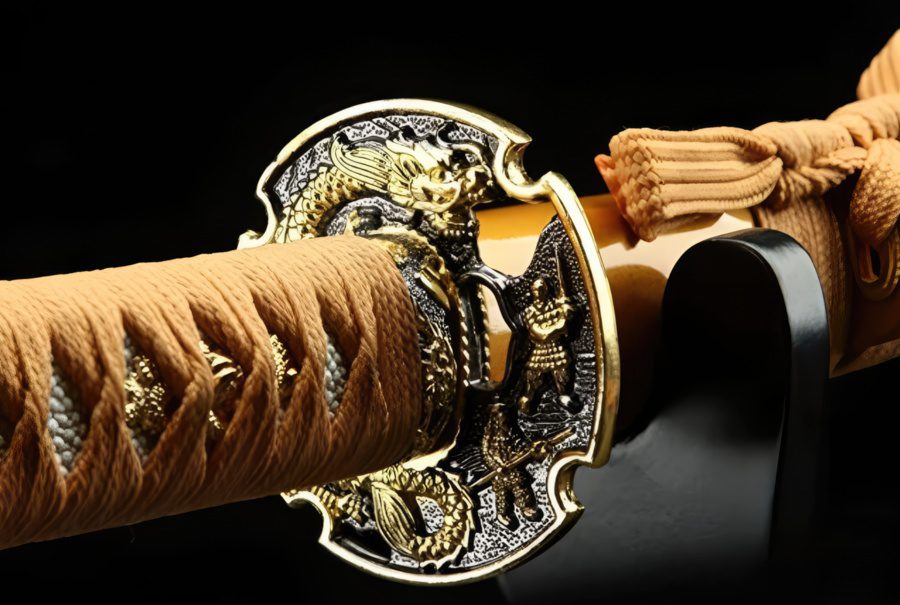
There are a lot of dragons in Japanese myths, standing for both good and evil. Most have bodies resembling snakes or serpents but can be different colors, meaning different things. Here are the most common colors for the dragons on Japanese Katanas.
- Black Dragon – Knowledge, wisdom
- White Dragon – Purity, death, mourning
- Yellow Dragon – Helpfulness, self-centeredness
- Red Dragon – Self-sacrifice, ambition, passion
- Blue Dragon – Compassion, forgiveness, energy
- Green Dragon – Nature, life, youth
- Golden Dragon – Kindness, wisdom, helpfulness
Other than the color, the Katana can have dragon symbols, and they each have a story that makes them look different and gives the sword a new meaning. Here are seven of the most common dragons on Japanese swords.
1. Yamato No Orochi
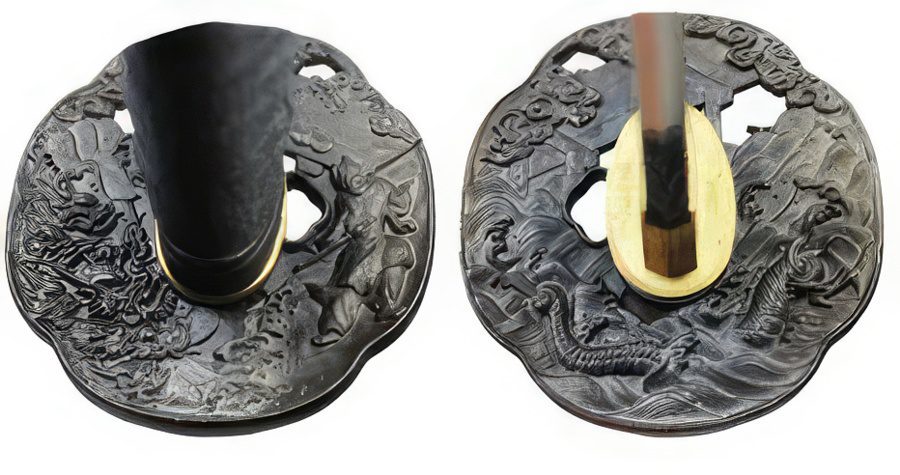
The Yamato No Orochi is said to be an evil dragon with eight heads that terrorized towns and villages in Japan. Most of the time, this dragon is not shown on a Katana sword. Instead, it shows Susasno, a Shinto god who killed the dragon by slicing it into pieces and saving the town and villages. The hero is shown with the famous and mythical sword Kusanagi-no-Tsurugi. and the dead dragon beneath him.
2. Ryujin
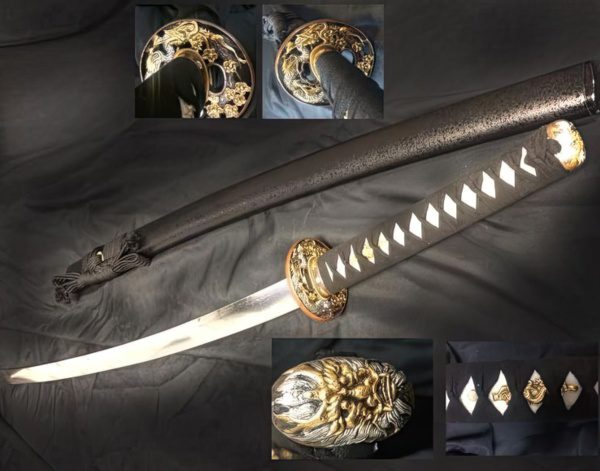
The Ryujin dragon is known as the god of the sea hence his very high position in the Japanese dragon hierarchy. He is most commonly shown on a Japanese Katana in a golden color with a large head and whiskers. Because of this, the tsuka, or handle, will commonly be yellowish across the entire length of the handle and finish with the serpent’s body on the hand guard.
3. Mizuchi
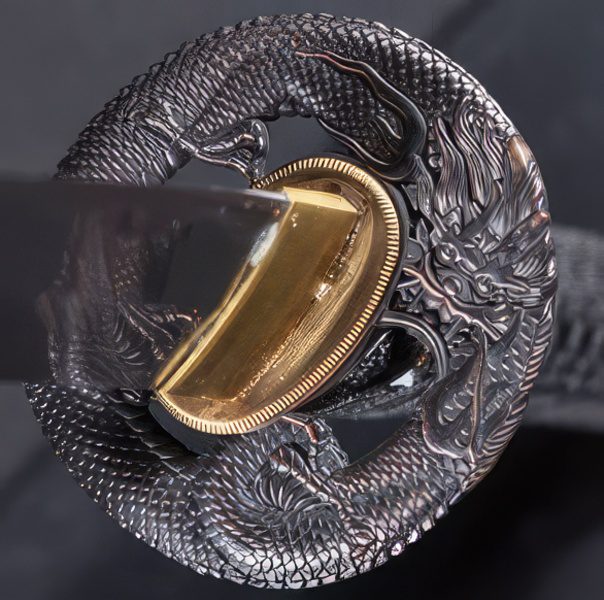
The Mizuchi is a hornless dragon rooted in legends and stories about rivers, which is why it is most commonly linked with the color blue. It can be seen on many handmade Katanas. The dragon tsuba can feature the face of the dragon because of the legend that it spewed venom from its mouth.
4. Kiyohime
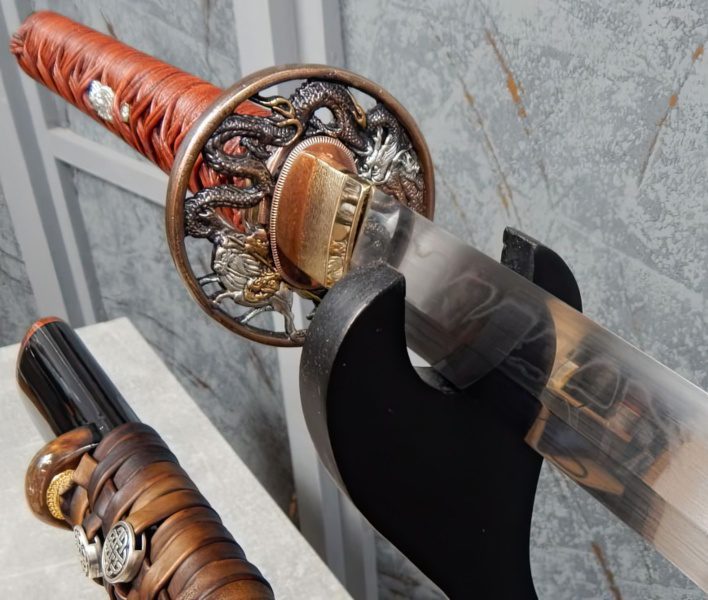
The legend of Kiyhoime, is the tale of an unreturned love of a princess towards another man. The man is filled with anger and tries to run away from the princess. While chasing him, the princess transforms into a dragon and kills the man. That is why this Katana features a dragon chasing something.
5. Wani
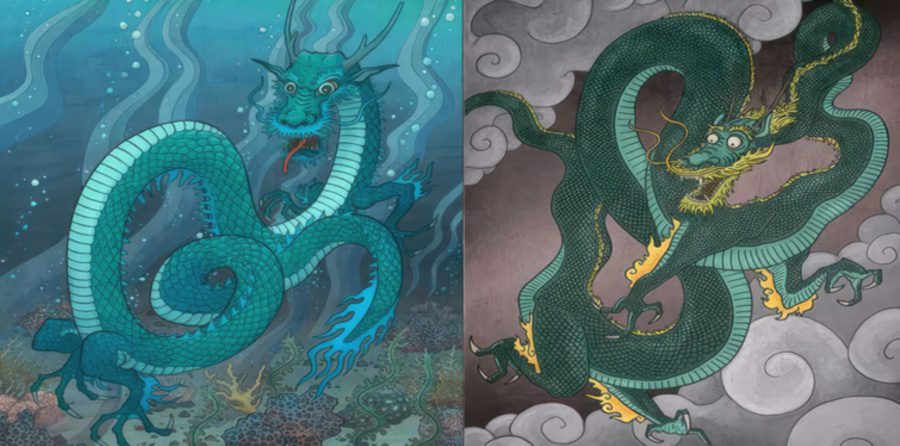
The Wani is one of the oldest Japanese dragons, and the legend states that he lives on the bottom of the sea in many castles governing the water. He can appear in different shapes and sizes on a Katana, such as a crocodile with arms and legs, but the Wani usually presents with an extremely thin and long serpentine body and a large head.
6. Nure-Onna
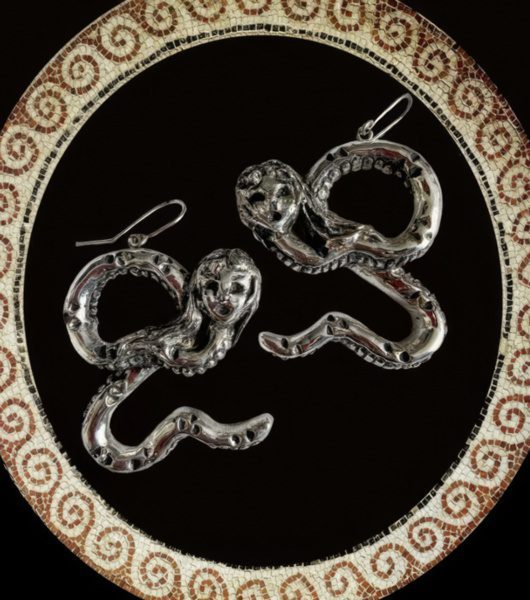
The evil dragon in Japanese folklore is called Nure-Onna, but this is not commonly seen on a Katana because it is linked to stories of jealousy, anger, and evil. The most common shape would be a snake-like body without arms or legs, sometimes with a woman’s face, which is Nure-Onna herself.
7. Zennyo Ryuo
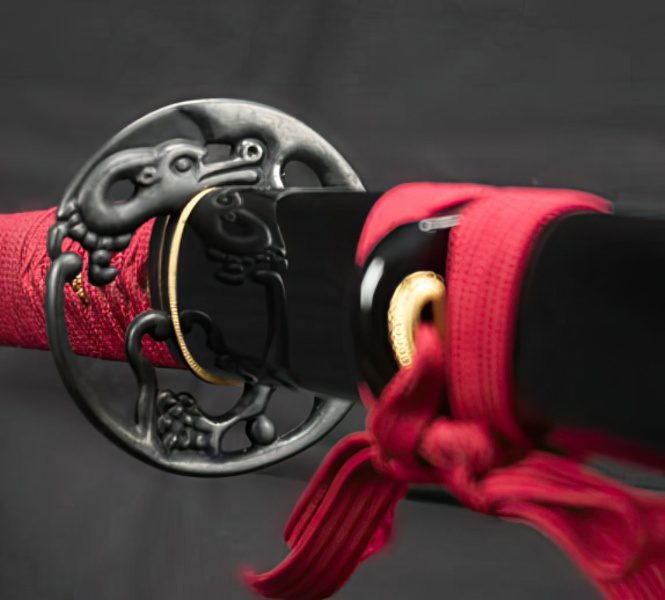
The rain dragon that listened to prayers, gave the people much-needed water, and took some elements of Indian Hinduism, is known as Zennyo Ryuo. This dragon symbol can be seen on Japanese swords, though it isn’t much similar to the others. It features a simpler design without the wavy form and can sometimes have Indian symbols.
Types of Japanese Dragon Katana Swords
Many other weapons and Japanese swords can feature high-quality Japanese dragons. Some examples are the smaller blades, Wakizashi and Tanto, which may be functional, but because of their smaller size, some people prefer to use them as strictly decorative pieces.
The Japanese Katana Samurai sword, however, is the most popular sword to feature the Japanese dragon with a functional blade tested on water bottles and tatami mats and can be used for sparring.
However, there is a difference in the Japanese dragon Katana sword. Dragon symbols can increase the price of a Katana since it requires expertise in crafting. The three most common Dragon Katana swords range from $200 to $1,000.
Decorative
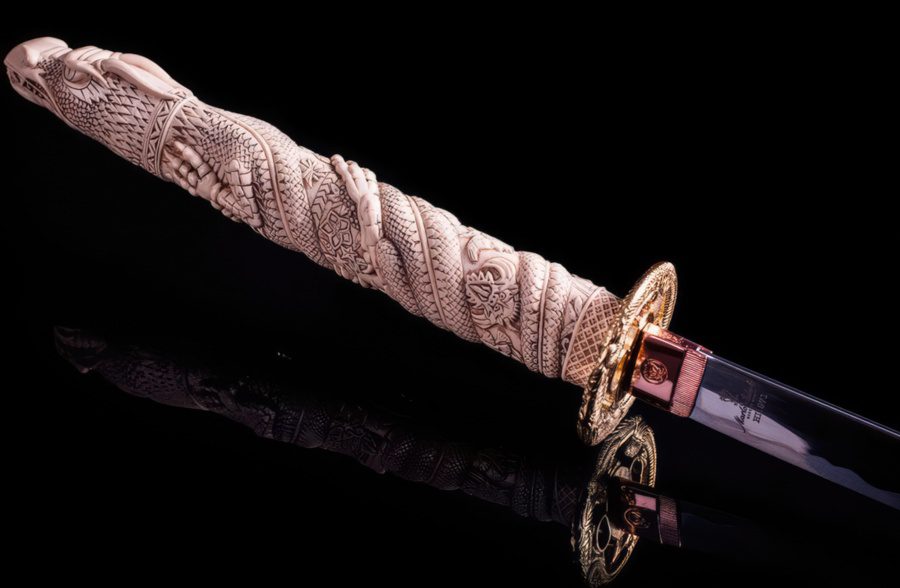
The Japanese dragon is aesthetically beautiful and adds considerable value to the Katana, leading some manufacturers to create Katana swords with a greater emphasis on decoration rather than functionality. The dragon is sometimes carved into a simple wooden piece of the handle, a departure from the more common ray skin wrapping, large metal guards, and pommels.
These Katana dragon swords are mostly ornamental and can be made out of stainless steel blade material, another type of decorative metal less prone to corrosion. They are highly popular in media, especially anime, and are sometimes linked with ninjas.
Damascus
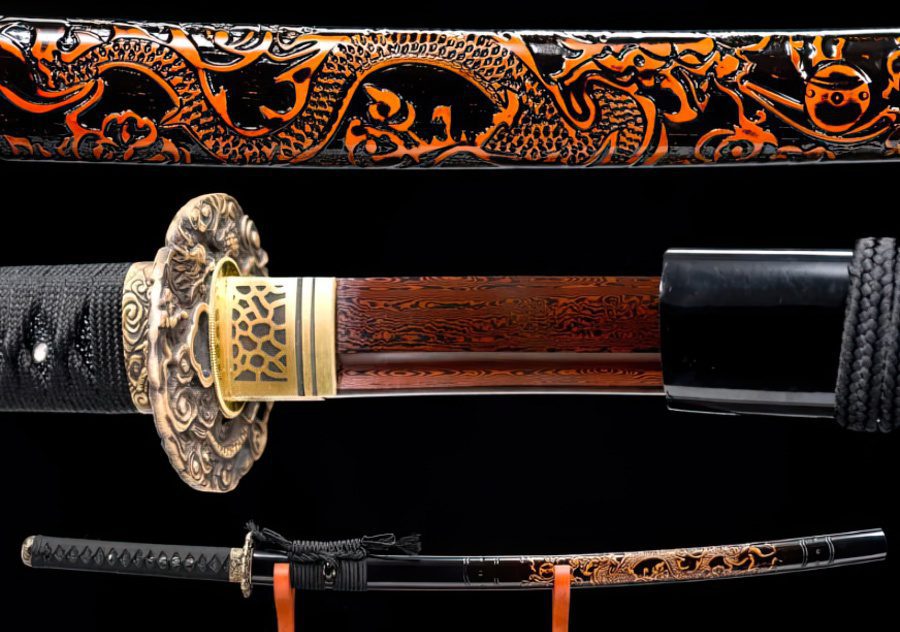
Some Katana swords feature the dragon almost everywhere on them. These dragons are placed on the hilt, scabbard, and through the entirety of the blade of the Damascus Steel. Sometimes they can take on different colors, such as red or blue, to signify the meaning of the dragon.
The Damascus dragon Katana sword is a hybrid between the decorative and functional sword, as the handle and blade shape are unchanged and still functional. It’s worth noting that Damascus steel does not cut any sharper, nor is it any better than a regular type of modern functional steel, but because of looks alone, its price will be significantly higher.
Functional
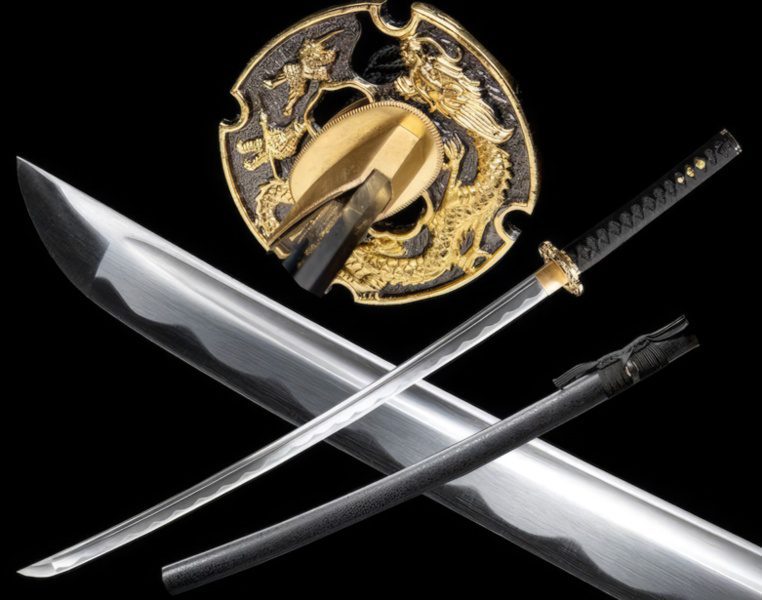
The functional or battle-ready dragon Katana sword has the original Katana design and shape and mostly feature the dragon aesthetics on the guard, handle, pommel, and scabbard as a decoration. Its blade is usually made of carbon steel.
This would be the real Japanese Samurai Katana sword with the addition and value of the Japanese dragon. Depending on the price, these dragon shapes can be hand forged, and the blade can be clay tempered so the hamon, or line across the length of the carbon steel blade, can be wavy in the form of a dragon without damaging the sword’s functionality.
The Meaning of the Dragon on the Japanese Katana
Having a Japanese dragon whirl around your sword can be a powerful symbol of your capacity to conquer challenges and fears in your life and your martial arts journey. It is a stunning illustration of the Samurai and Japanese culture and is a welcome addition to the aesthetics that go hand in hand with any form of Samurai sword.
Here we will go over the most important parts of the Katana, where the dragon is frequently placed, and what it represents.
Blade
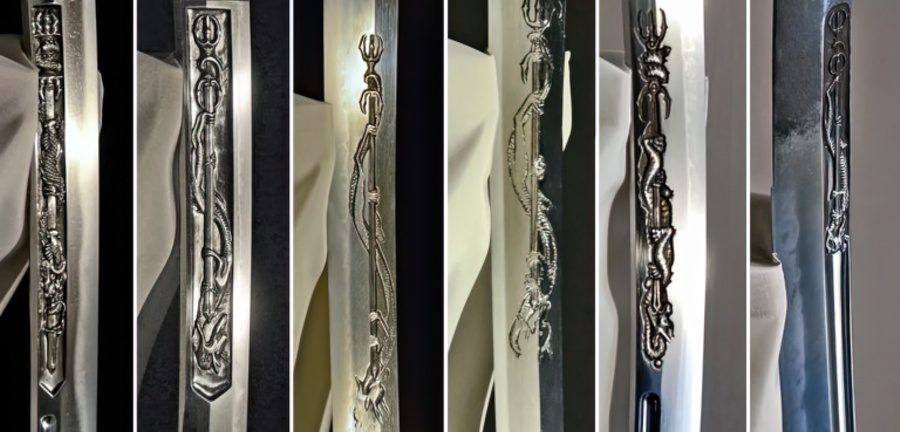
The dragon on a Japanese sword’s blade is a symbol of vigor, power, and wisdom. The dragon is frequently interpreted as a sign of supernatural power and knowledge in Japanese mythology. The dragon is believed to control natural forces like lightning, wind, and rain. Putting a dragon’s image on the blade of a sword gives the weapon some of the dragon’s power and strength, as well as the ability to control the flow of natural energy.
Guard
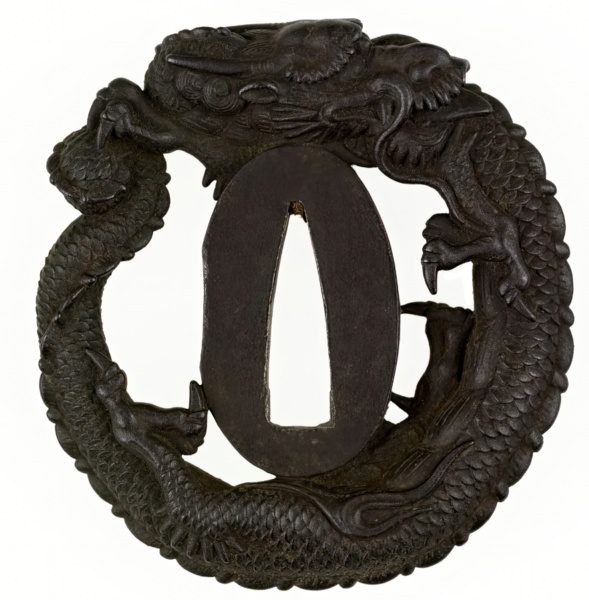
The dragon on a Japanese sword’s guard is a symbol of safety and defense. The guard, or tsuba, keeps the opponent’s blade from cutting the sword user’s hand. By putting the form of a Japanese dragon on the guard, it is thought that this defensive element will be safer and its user more secure and at peace.
Handle and Fittings
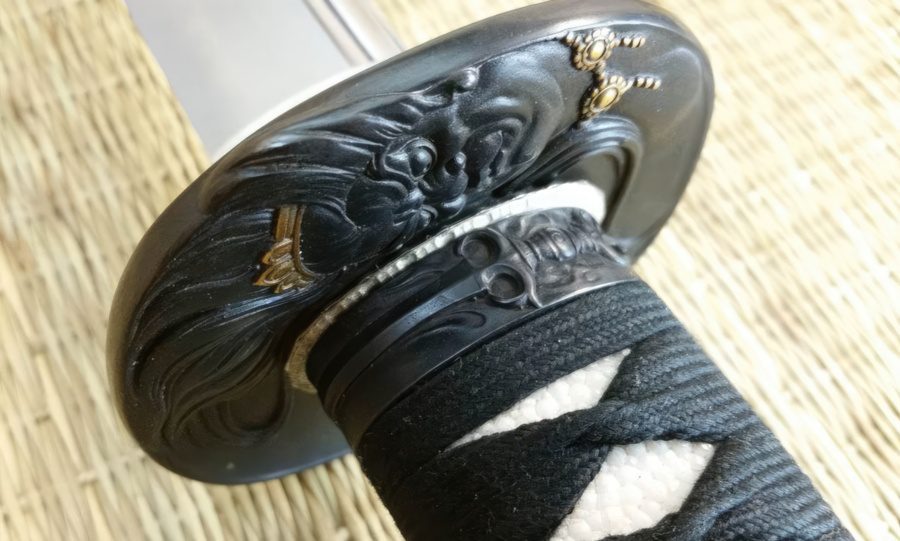
The dragon is put on the handle, fittings, or handle wrap of a Japanese sword to show strength and flexibility in martial arts and life, as well as good luck. In Japanese culture and folklore, when the dragon appears at the right time, it often brings prosperity and wealth. Because of this, putting a dragon design on the handle of the sword is thought to give the person wielding it more luck and power when guiding the weapon.
Menuki and Wrap
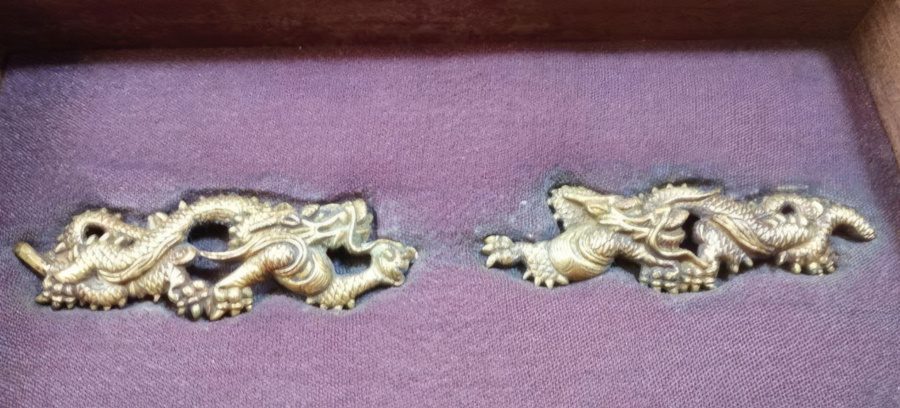
The menuki are metal handle fittings and artistic pieces under the handle wrap. These small decorations can be made in the many different shapes of a Japanese dragon, both large and small. If they are added, it is thought that the sword user will feel both the dragon’s anger and kindness.
Pommel
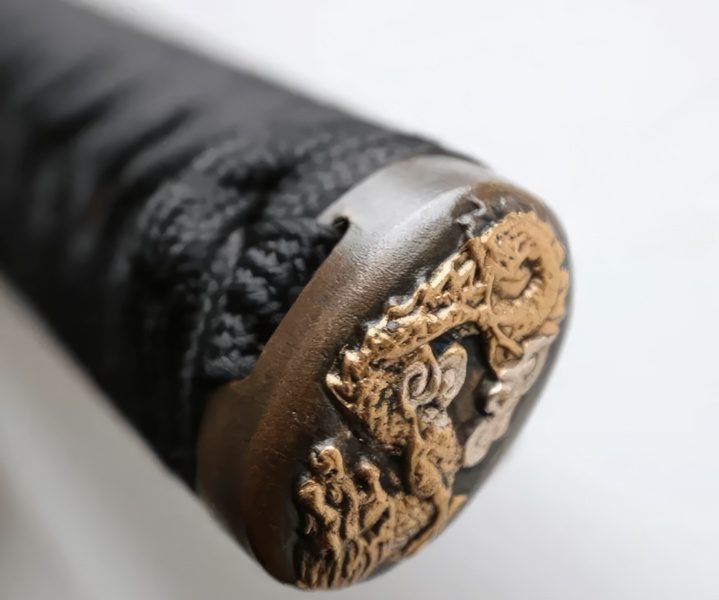
One of the most common places for the Japanese dragon is on the pommel, or kashira. Most of the time, the pommel is a piece of metal that acts as a decorative piece when the sword is not in use. The pommel can be decorated with detailed designs, like the Japanese dragon. By adding the dragon, it is thought that the person who uses the sword will be graced with wealth and luck in all their endeavors.
Scabbard

The scabbard, or saya, holds the Katana in place and keeps it safe from the outside world and the elements in the same way the Japanese dragon can be the protector of a local populace. One of the most important places to put the Japanese dragon is on the scabbard because it represents not only power and knowledge but also calmness and tranquility.
Traditionally, the Katana was passed down from one generation to the next, and adding a dragon to the sword gives it a spirit of honor, justice, and duty.
